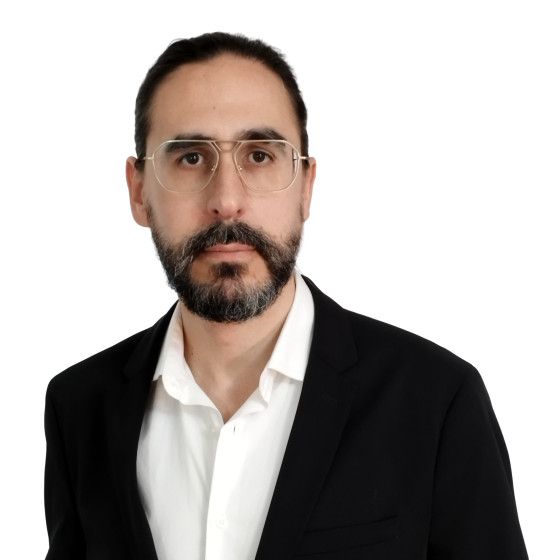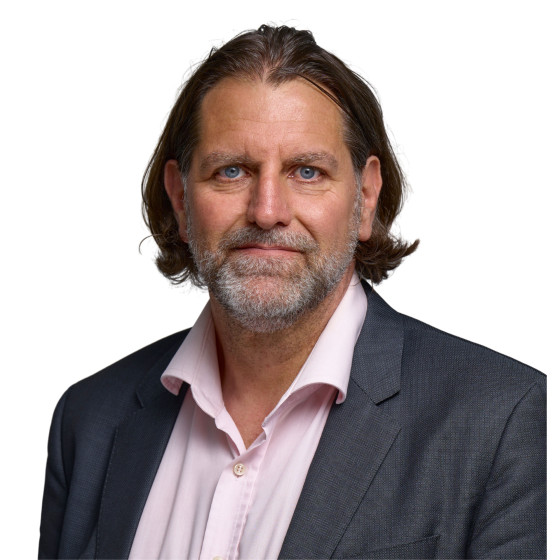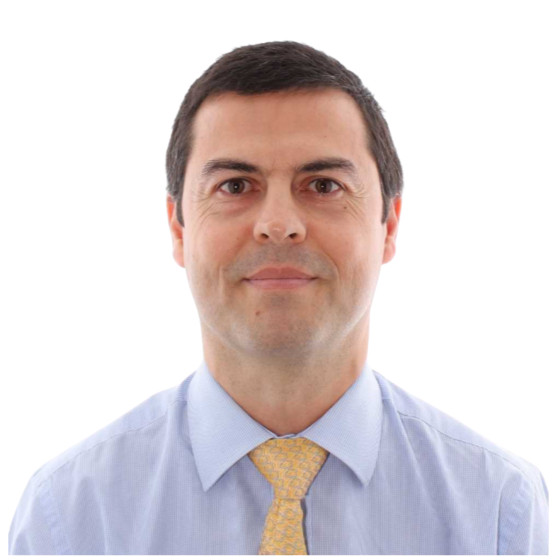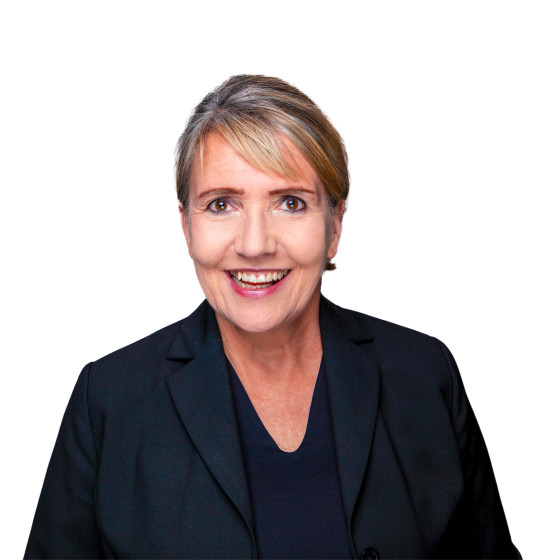
Heading for a more sustainable life
Every innovation brings us closer to our goal
The energy transition is more than a technical project. It is a transformation affecting the whole of society. As an energy economist I follow with great interest how universities in Germany – including the University of Münster – make important contributions to finding solutions to this challenge. These issues are also something I deal with in my research into sustainable energy systems.

The possibilities are promising: scientists are developing recyclable, bio-based materials for batteries, thus providing a substitute for fossil resources. At the same time, research is being carried out on how increasing the use of different forms of renewable energy can be compatible with protecting biodiversity. What is particularly impressive is the spectrum of activities. It ranges from basic research and quantum technologies to practical solutions for everyday life. Every innovation brings us a step closer to a climate-neutral society. Reality, however, also shows us how complex the task is: three million households in Germany are currently suffering from energy poverty – which means that they have to spend more than ten percent of their income on energy (electricity, gas, heating). Global competition in the field of battery technologies is intense, and Europe risks getting left behind. Moreover, global demand for energy continues to rise while, at the same time, we have to drastically reduce emissions.
The future of energy is in our hands – all of us. We need to act, and that includes all branches of science, taking in everyone from individual researchers to the international level. Universities are taking their responsibility seriously – through outstanding research, sustainable campus management and the promotion of junior researchers. We must work together to lay the foundations for sustainable, equitable and innovative energy supplies.
Prof. Claudia Kemfert is Head of the Energy, Transportation, Environment Department at the German Institute of Economic Research (DIW Berlin) and is Professor of Energy Economics and Energy Policy at Leuphana Universiy Lüneburg.
Energy transition must be fair and safe
What will the energy of the future look like? Answers may vary depending on individual, corporate, or political interests. Still, we can probably find broad agreement around a few essential qualities: fair – not reinforcing inequality but empowering communities; accessible – available and affordable for all, everywhere; clean – without polluting or harming the environment; and safe – posing no risk to human or environmental health, now or in the future.

To reach these goals, energy should not only be renewable, but also efficient, decentralized and resilient. Additionally, the transition toward this new system should be transparent, with clear, ethical, and participatory processes. We must succeed in maximising resources without generating waste. It should be generated as locally as possible and we need a crisis-proof energy system.
However, this apparent consensus often clashes with the real debates in politics and the scientific community, where some priorities are sacrificed in favor of others. A clear example is building new nuclear plants in countries with uranium reserves. They take ten to 20 years to become fully operational and can run for another 80 years, producing radioactive waste that must be stored under strict conditions, while locking out cleaner alternatives.
Is it impossible to combine all these desirable characteristics? The local context becomes essential. One solution won't fit every region, and today’s best option might not be tomorrow’s. We need flexible systems that avoid long payback periods and can adjust to each region’s resource availability, population distribution, and industrial landscape. This is a hard task but, if we work side by side, we can make it happen – by 2050?
Dr. Bernabé Alonso-Fariñas is Professor at the Department of Chemical and Environmental Engineering at University of Seville (Spain) and a member of the European Platform for Sustainable Finance (2021–2025).
Political measures play a decisive role
The energy transition plays a key role in reaching climate targets. For this, it is not only new technologies that are needed, but also the right political conditions. This is where economic research makes an important contribution. For example, we model resource markets and energy markets in order to assess the effects of political measures and thus show decision-makers the costs and benefits of various courses of action.

At the same time, we analyse the behaviour of companies and consumers. One result we have arrived at is that behavioural interventions are effective, if used moderately. The effect is increased considerably through a good combination of political measures, as was shown for example through CO2 pricing in the context of European emissions trading or for reducing the demand for energy in households. A particular challenge is presented by the appraisal of any welfare effects resulting from political measures. The result of an electricity-saving competition, carried out jointly with Münster Utilities, was that setting targets for savings had no great effect as far as local energy experts were concerned.
The Future Digital Towns research group at the University of Münster, funded by the German Research Foundation, is investigating how digital technologies can simplify planning processes and improve communication between local government and citizens, thus increasing a readiness to accept new measures. Such technologies also play a key role in load management in power generation – especially in view of the latter’s increasingly decentralised and dynamic shape. Intelligent electricity meters and flexible prices can influence the demand side in real time and lead to an improved distribution of consumption, thus avoiding bottlenecks in the grid. To this end, however, decision-making authority must be transferred to AI. Whether electricity customers would be prepared to accept this – and under what circumstances – is something we are currently looking at.
Dr. Andreas Löschel is Professor of Environmental/Resource Economics and Sustainability at the University of Bochum.
Why hydrogen is an important factor
The energy transition towards a net-zero carbon energy system is already ongoing, although with significant differences among regions and sectors. Globally, clean energy has slowly started to replace fossil, still at a lower rate than necessary to reach the full decarbonization targets for 2050 (EU and USA) or 2060 (China).

The increasing electrification and the further penetration of renewable energies in the energy mix is certainly the backbone of the energy transition. Solar PV and batteries are gaining an extreme relevance. This is also making the electrification of transport further progress at a good rate. Actually, PV and Electric Vehicles deployment in China is running at a much faster rate than expected. Wind power is obviously another fundamental component for the decarbonized energy system.
It is expected that around 85% of the energy requirements could be electrified with clean and renewable energy sources. However, the energy transition will need to struggle with the hard-to-abate or hard-to-electrify sectors (such as iron and steel industry, cement, heavy-duty transport). For this 15%, hydrogen energy is recognised to be a suitable solution, as it is a carbon-free fuel with really high heating values. Hydrogen can be produced by several processes and technologies, being one of the most relevant the electrolysis of water. There are well-known drawbacks of hydrogen as a gas (such as transportation and storage due to its low density) but the feasibility to produce a set of green derivates makes hydrogen a relevant enabler for the energy transition.
Prof. Alfredo Iranzo Paricio, University of Sevilla (Spain), is Chief Scientific Officer of the “Ulysseus-Innovation Hub on Sustainable Energy, Transport, Mobility for Smart Cities”.
Consumers need to remain flexible
Our energy supplies are in the middle of a radical transition. With a share of over 50 percent of total electricity demand, renewable energies are now an integral part of the system. The cheap average cost of generating one kilowatt hour of electricity using wind and solar energy means that new energy investment is increasingly flowing into these technologies. According to data published by the International Renewable Energy Agency, it exceeded 90 percent in 2024.

Germany has committed itself to becoming climate-neutral by 2045 at the latest. With this in mind, 80 percent of electricity and 50 percent of heating are to be delivered by renewable energies by 2030. Over the past few years, enormous progress has been made in expanding the share of renewables for power generation, with wind and photovoltaics (PV) in particular repeatedly setting new records. The targets for 2023 are within reach. On the path into a climate-neutral future, the energy system as a whole – which in the past was dominated by large-scale fossil-based and nuclear power stations – now needs to become the focus of attention.
The generation and consumption of electricity need to be synchronised in real time, and this is where the flexibly controllable renewables come into play – bioenergy, hydropower and geothermal energy – which feed into the grid when there is no wind and the sun isn’t shining. They are complemented by co-generation plants, storage facilities and sector-coupling technologies.
Consumers, too, need to stay flexible. Dynamic electricity tariffs and variable grid charges promote an efficient use of PV systems, home storage facilities, electric vehicles, heat pumps and other appliances in the home which run on electricity. All this is coordinated by intelligent smart meters, which now need to be installed on a massive scale. It will mean that we will come ever closer to an energy system for the future with reliable and sustainable energy supplies.
Dr. Simone Peter is President of the German Renewable Energy Association (Bundesverband Erneuerbare Energie)
This article is from the University newspaper wissen|leben No. 5, 16 July 2025.
